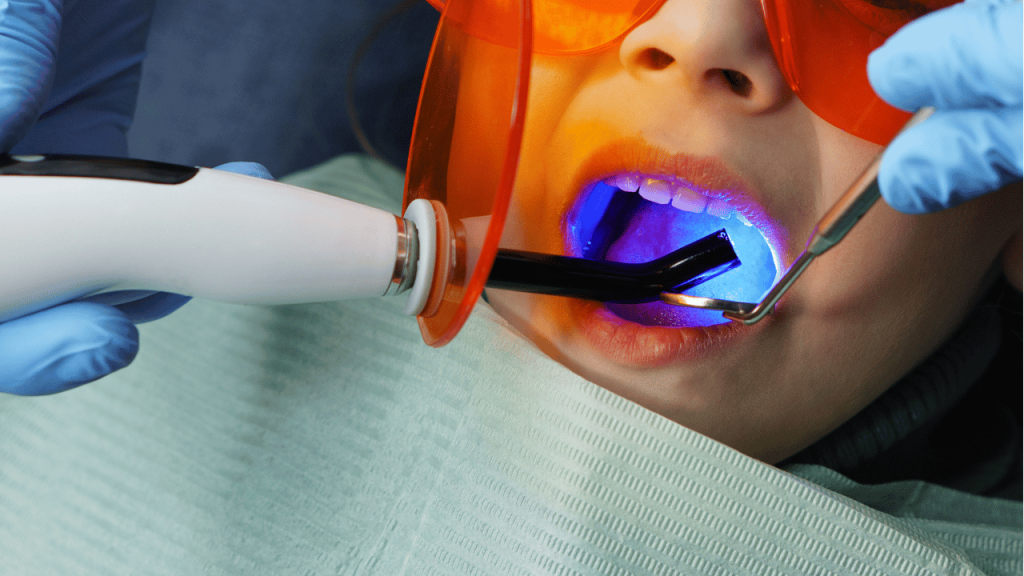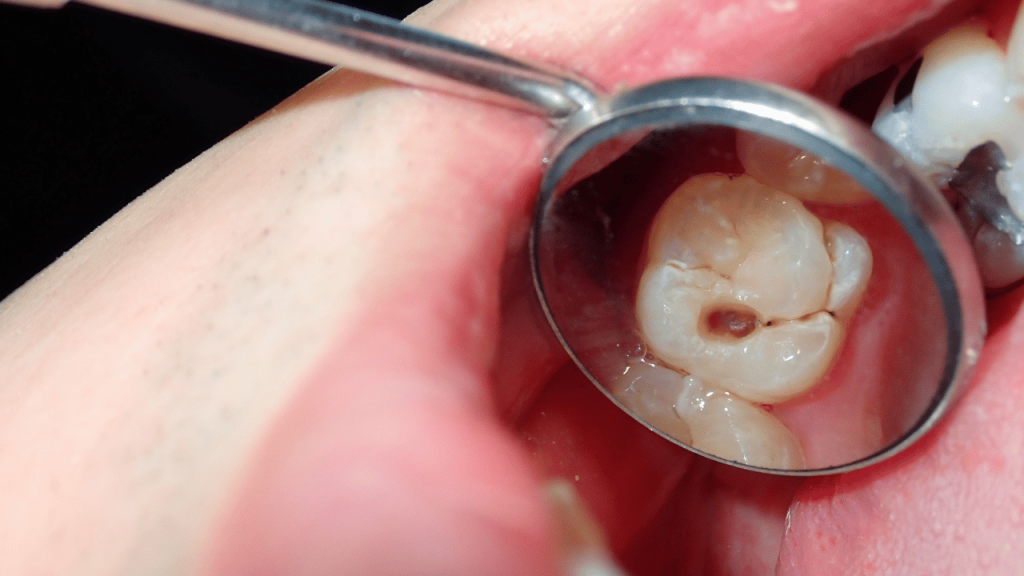
Are you nervous about getting a dental filling? You’re not alone. Many people worry that fillings will be painful, but the truth is that modern dentistry has come a long way. With the proper preparation and care, getting a filling can be a relatively painless and routine procedure. In this article, we’ll explore some common concerns about fillings and provide expert insights from Dr. Shafna Mariyam, an experienced dentist who has seen it all.
Cavities are caused by tooth decay [1], which occurs when bacteria produce acid that eats away at tooth enamel. Fillings are a common treatment, removing decayed tooth parts and filling the space with materials like composite resin or amalgam.
The discomfort of fillings depends on factors like cavity size and location. With proper numbing, most people feel little to no pain during the procedure.
Key Takeaways
- Fillings are a standard treatment for cavities caused by tooth decay.
- The pain level during a filling procedure depends on several factors. Still, most people experience little to no pain with suitable numbing agents and techniques.
- Proper post-procedure care can help minimize sensitivity and discomfort.
Understanding Cavities and Fillings

Dental filling can be relatively painless with the proper preparation and care. Fillings are used to treat cavities caused by tooth decay, and the pain level during the procedure depends on factors like cavity size and location. Small cavities typically involve minimal discomfort, while deeper cavities may require more drilling and cause more pain. The location of the cavity can also affect the level of discomfort during the filling procedure. Communicating with your dentist about any concerns about pain management during the procedure is essential.
Size and Depth of the Cavity
The cavity’s size and depth can affect the discomfort level during a filling. Small cavities require less decay removal and cause less pain. Deeper cavities require more drilling and may lead to more potential for pain.
To minimize discomfort, your dentist will use a local anesthetic to numb the area before drilling. For deeper cavities, a deeper injection may be necessary. Here’s a summary of what to expect based on the size and depth of your cavity:
Small Cavities
- Minimal discomfort due to less decay removal
- Less drilling required
- Local anesthetic to numb the area
Deep Cavities
- More pain potential, closer to nerve endings
- More drilling required
- It may require a deeper injection to numb the area effectively.
- Local anesthetic to numb the area
Overall, the size and depth of your cavity can affect the discomfort you may experience during a filling. Communicating with your dentist about any concerns about pain management during the procedure is essential.
Location of the Cavity
The location of your cavity can affect the discomfort during a filling. Smooth surface cavities on the sides of your teeth are less painful to fill, while pit and fissure cavities on the biting surfaces may cause more discomfort. Talk to your dentist if you’re concerned. They can provide more information and recommend the best approach for your specific cavity.
Number of Cavities
If you have multiple cavities, the filling procedure may cause increased discomfort. Your dentist will use a numbing agent and local anesthetic to prevent pain. It’s essential to address all cavities promptly to avoid further damage. Talk to your dentist about the best treatment plan for your situation.
How Long Does a Filling Take?
How long will the procedure take if you’re getting a filling for the first time? The time it takes to fill a cavity varies based on the size and number of cavities. Small fillings typically take 20 to 30 minutes, while more profound or multiple cavities take longer.
Procedure for Getting a Filling
If you have a cavity, your dentist may recommend a filling to restore the tooth and prevent further decay. Here’s what you can expect during the procedure:
Anesthesia
Before getting a filling, your dentist will numb the area around the tooth using a local anesthetic, such as lidocaine [2]. This may involve a numbing gel followed by an injection, which may cause discomfort.
Removing Decay
After numbing the area, your dentist will use a drill or laser to remove the decayed part of the tooth and clean the area to prevent further decay.
Filling Material
Your dentist will fill the cavity with a material like amalgam [3], composite resin [4], or porcelain, depending on the cavity’s size, location, and your preferences.
Finishing Up
After the filling is in place, your dentist will shape and polish it for comfort and a natural look. You may experience sensitivity or discomfort, which should subside within a few days. Getting a filling is a simple and relatively painless procedure that helps preserve your oral health. Discuss any concerns with your dentist beforehand.
What Are the Types of Fillings?
The most common fillings are amalgam, composite, gold, and ceramic, each with benefits and drawbacks. Amalgam fillings are durable but may not be ideal for visible teeth. Composite fillings are tooth-colored but less durable. Gold fillings are long-lasting but noticeable. Ceramic fillings blend in with your teeth but are more expensive. Consider factors like decay location, cost, insurance coverage, and your dentist’s recommendation when filling.
What Types of Numbing Are Available?
If you’re worried about pain during a filling procedure, your dentist will use numbing agents to prevent discomfort. Two types are available: topical numbing gel and local anesthesia.
Topical Numbing Gel: Using a cotton swab, apply it to your gum before the injection. It takes a few minutes to take effect.
Local Anesthesia: The most common numbing agent used during a filling, usually in lidocaine injections. Takes effect within a few minutes.
Once the anesthesia takes effect, you shouldn’t feel any pain during the procedure. If you do, let your dentist know. If you have allergies, inform your dentist beforehand. Post-Procedure Care and Sensitivity
After a filling, it’s essential to:
– Be gentle when brushing
– Avoid hard or sticky foods
– Take pain relievers if needed
– Be aware of swelling
– Avoid alcohol and tobacco
Remember to speak to your dentist if you have any concerns.
Does It Hurt After a Filling?
After getting a filling, some sensitivity and discomfort are normal. You may feel pain or sensitivity in the teeth surrounding the filling, especially while eating, brushing, or flossing. Recovery tips such as eating soft foods and using sensitive teeth toothpaste can help manage discomfort. However, abnormal pain, such as pain when biting down, should be checked by your dentist as it could be caused by an incorrectly aligned filling. Additionally, the filling used can also cause sensitivity or discomfort in the tooth. For example, sensitivity is common when a composite resin material is used. Still, it can be managed by adjusting the filling to better fit your tooth.
In conclusion, discomfort after a filling is standard, but your dentist should check for abnormal pain. Recovery tips such as eating soft foods and using sensitive teeth toothpaste can help alleviate any pain or sensitivity you may experience. Talk to your dentist about your options if you’re concerned about pain during or after your filling procedure.
Frequently Asked Questions
How long should I expect to feel discomfort after receiving a dental filling?
After a filling, the sensitivity to hot/cold and pressure for a few days is normal. This should subside within a week or two. If you have severe or prolonged pain/sensitivity, contact your dentist.
What is the process for numbing the tooth before a cavity filling?
After a filling, it is normal to feel sensitivity to hot/cold and pressure for a few days. This should subside within a week or two. If you have severe or prolonged pain/sensitivity, contact your dentist.
Can you eat immediately after a dental filling, and are there any restrictions?
You can eat and drink immediately after a dental filling, but avoid chewing on the treated side until numbness disappears. Also, avoid hard, sticky, or crunchy foods for a few days.
What does the procedure of getting a cavity filled involve?
To fill a cavity, the dentist removes decayed tooth material, numbs the area, fills the hole with a chosen material, and shapes it to match the tooth.
Is the sensation of tooth drilling without anesthesia bearable?
Tooth drilling can be uncomfortable, but modern techniques can minimize discomfort. If you experience any pain during the procedure, communicate it to your dentist.
How much time does it typically take to complete a dental filling?
The time to complete a dental filling depends on the size, location, and filling material. It can take 20 minutes to an hour on average. Your dentist can provide a more accurate estimate based on your needs.

